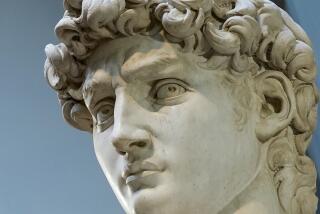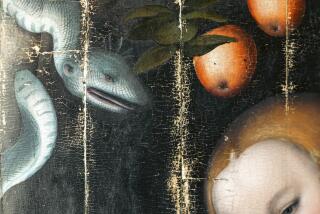Michelangelo’s Nudes Destroyed by Censors, Restorers Announce
VATICAN CITY — Art restorers said Tuesday that they could not remove veils and other coverings added to hide nudity in Michelangelo’s Last Judgment frescoes in the Sistine Chapel because the originals had been destroyed.
The announcement was made after a weeklong international symposium of art historians studying the first phase of a multimillion-dollar restoration of one of the world’s greatest art treasures.
The 10-year cleaning of the ceiling frescoes was completed last month and scaffolding has been built for a four-year project to restore a massive, 300-figure scene depicting The Last Judgment on the wall behind the main altar.
The 1545-1563 Council of Trent ordered that some of the nudes on The Last Judgment be covered. Most of the work was done by Daniele Da Volterra after Michelangelo died in 1564.
At a news conference marking the start of work on the 1,800-square-foot panel depicting Earth, Heaven and Hell, officials said the originals of the doctored frescoes could not be restored.
“The additions that were painted by Daniele da Volterra shortly after Michelangelo’s death were painted in fresco and that means that Michelangelo’s original frescoes were taken out,” said Kathleen Weil-Garris Brandt, the Vatican’s consultant on Renaissance art.
In the fresco technique, artists paint on wet plaster which becomes part of a wall or ceiling when dry. If Da Volterra, known as the “breechmaker” because of his censorship, had used a dry technique to cover the offending frescoes, restorers could have uncovered the original.
In his most famous modification of The Last Judgment, Da Volterra ripped out the figures of St. Catherine and St. Blaise, both originally nude, and repainted them with flowing garments.
More to Read
The biggest entertainment stories
Get our big stories about Hollywood, film, television, music, arts, culture and more right in your inbox as soon as they publish.
You may occasionally receive promotional content from the Los Angeles Times.










